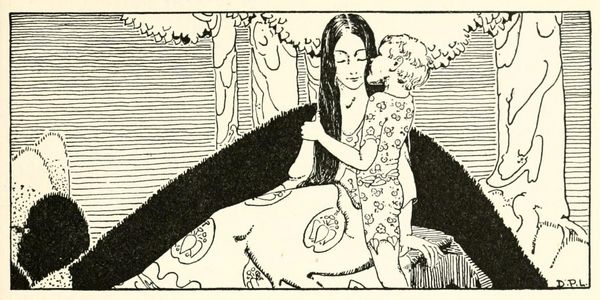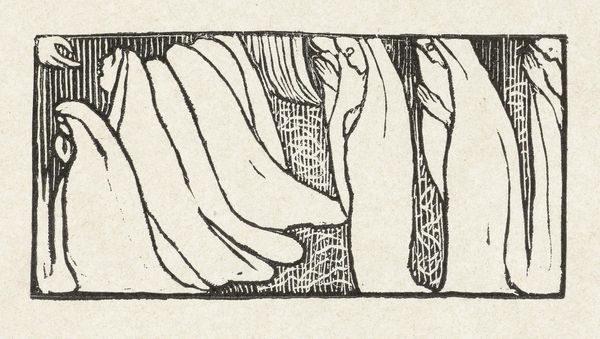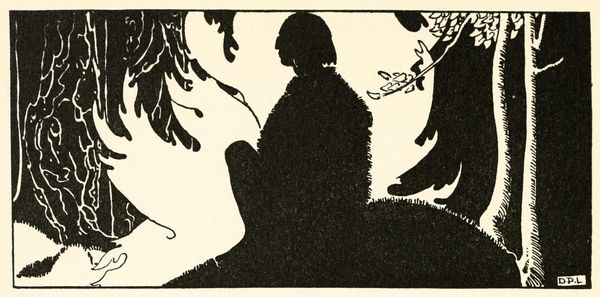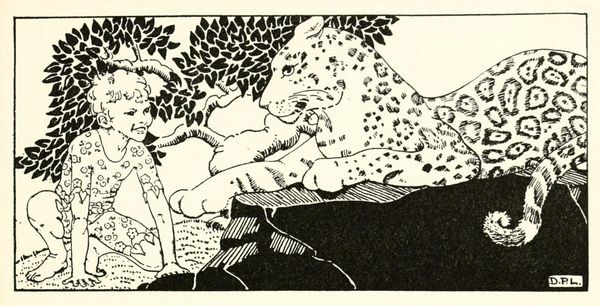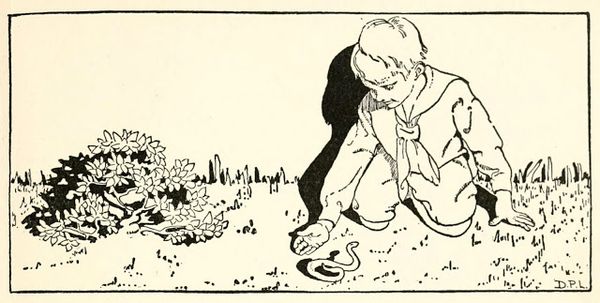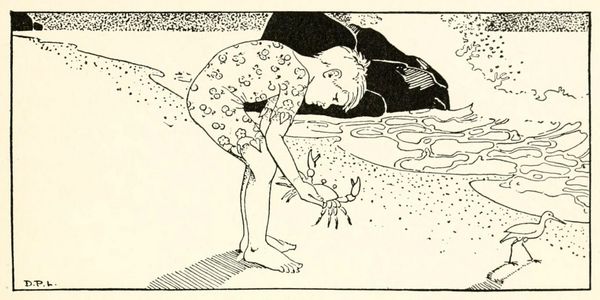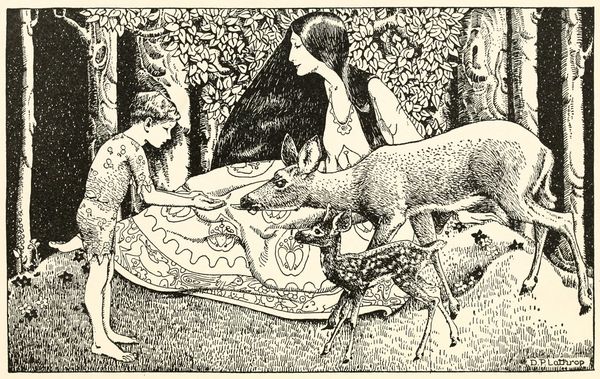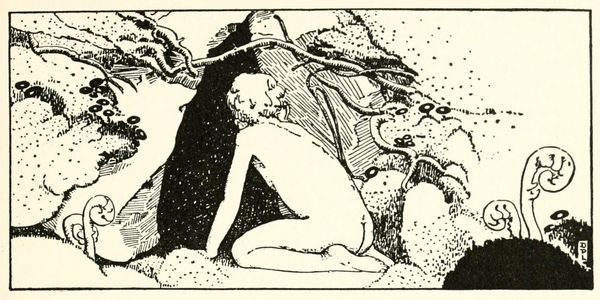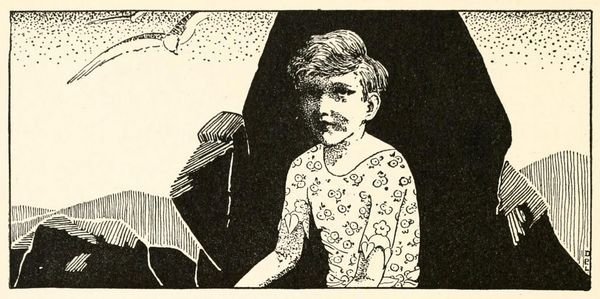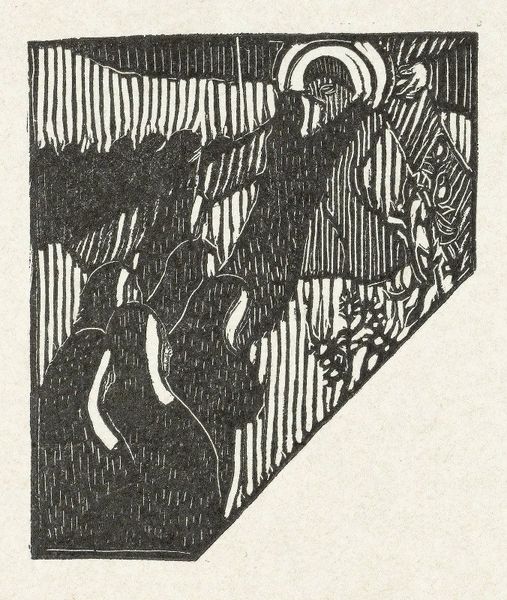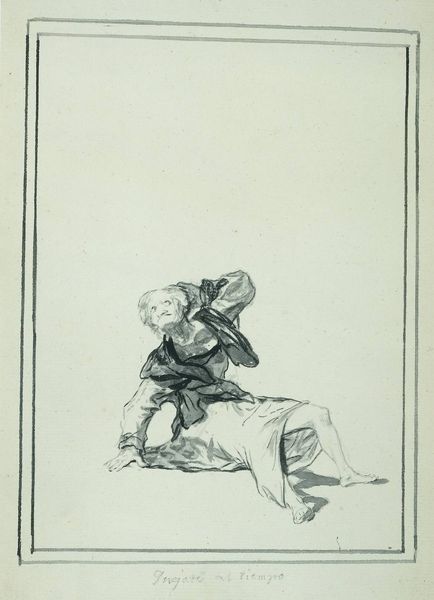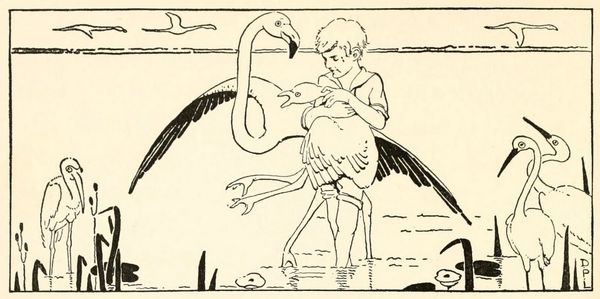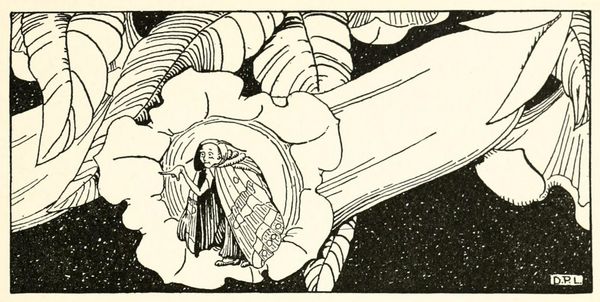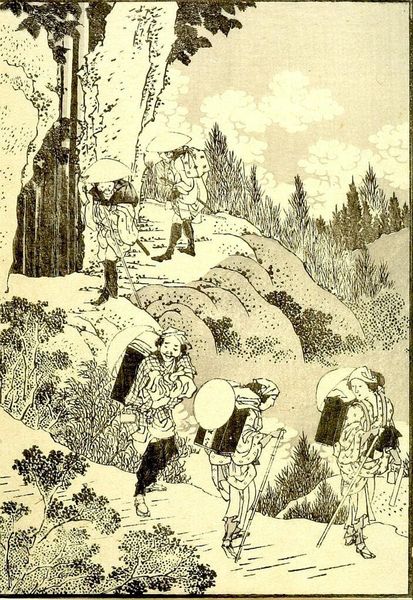
#
quirky illustration
#
mechanical pen drawing
#
pen illustration
#
line drawing illustration
#
junji ito style
#
ink line art
#
linework heavy
#
wedding around the world
#
pen-ink sketch
#
pen work
#
botany
#
organism
Copyright: Public domain US
Editor: We're looking at "A Little Boy Lost," a 1920 pen illustration by Dorothy Lathrop. It's a stark, almost unsettling image, with a heavy use of linework. What draws your eye when you look at this piece? Curator: Oh, this whispers to me of those peculiar childhood reveries, doesn't it? Look at the boy, swallowed by the shadows, the strangely angular, almost hostile tree offering no comfort. I wonder if Lathrop aimed for that sense of isolation; she might've been tapping into a collective fear, or perhaps a solitary dread she knew intimately. Do you feel it, too, that lonely echo? Editor: I do. The tree feels…protective, but also menacing. It's interesting that you mention her own feelings. Does the art historical context offer some clues here? Curator: Indeed! Consider the era—just after the first World War. The world was reeling, disillusioned. Lathrop, known mostly for children's book illustrations, might be subtly portraying that lost innocence. And think about the power of fairytales -- often the safest way to voice complex societal woes. Perhaps that little boy represents a generation adrift, clinging to spiky hopes. Or the very idea that he must navigate through an imposing, thorned obstacle. Editor: It is like he’s sheltering from a world too difficult to bear. This is a very different Lathrop from the one I had in mind! So she could well be hinting at something a little more complex? Curator: Exactly! See how she masterfully balances delicacy with something bordering on starkness? Lathrop leads us down a garden path, with hidden teeth. Does it make you see the drawing with slightly different eyes? Editor: Definitely. I went from initial apprehension to seeing something more symbolic and historically resonant. Thank you! Curator: My pleasure! It's like peeling back an onion, isn't it? Layers upon layers. What a thought!
Comments
No comments
Be the first to comment and join the conversation on the ultimate creative platform.
